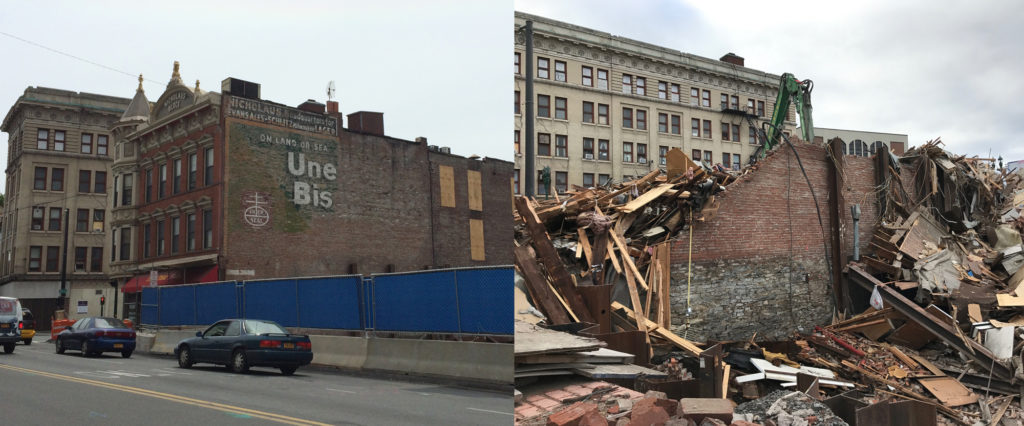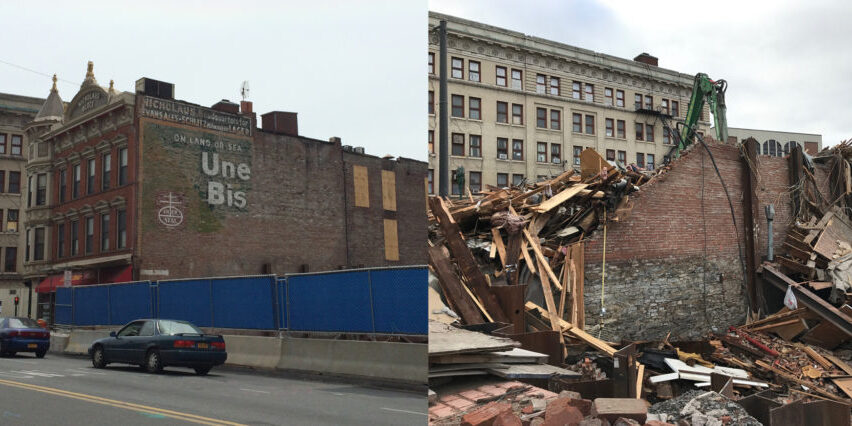Ronald Ladouceur, professor of marketing at the University at Albany, talks about his passion for ghost signs, and how that passion led to his article in the fall 2018 issue of the SCA Journal, Do Uneeda Ghost? Hurry, They’re Going Fast.
Q&A
What inspired you to write this article?
As mentioned in the article, the discovery of a well-preserved ghost sign fragment in Schenectady, New York, exposed when the building next door was demolished, sent me to the internet to see if I could figure out what “Une Bis” meant. It turns out Uneeda Biscuit was one of the most famous brands in the world at one time. And I’d never heard of it!

This ghost, which inspired the article, Do Uneeda Ghost? Hurry, They’re Going Fast!, was demolished not long after its discovery. Two other Schenectady examples were also demolished in the last three years. Only one Schenectady Uneeda Biscuit ghost remains.
What was the biggest surprise you uncovered during your research?
I was shocked to learn the board of directors of NBC (now Nabisco) authorized $7 million in 1899 to promote a yet-to-be-proven packaged good – just one year after the parent company was founded. That’s not Apple or Nike-level money, even after converting to current dollars, but it was a huge budget for a single product, and its allocation was an amazingly bold and visionary decision. Coca-Cola, Mail Pouch, and a few other products had pioneered hand-painted signs as a branding medium, but they’d grown organically market to market. NBC was gambling on creating a national market, all at once, all before the company was even sure it could produce a uniform product with any margin for profit at a scale required to meet demand, assuming it could create demand.
Anything you’d like to add?
There was in fact only a very short window of opportunity in which advertisers could exploit this medium. There were court challenges to the “visual pollution” of outdoor advertising immediately. By 1920, advertising agencies generally could no longer make private deals between themselves and building owners to paint ads on public-facing walls without seeking some sort of official approval. The brands that got in early were allowed, it appears, to maintain their signs. But national branding moved from hand-painted brick walls to standardized and printed billboards, and of course just a little later, to radio and television.
Where can people find out more?
Ghost signs have become a very popular “collectible.” There are now many books on the topic. The History Press has published a series with the shared title preface, Fading Ads of … Like Fading Ads of New York City, Fading Ads of Philadelphia, etc. I’ve also written a couple of other essays on this topic for my business website, including Fading to Modern and Uneeda Exposed. But the best way to find out more is to seek out those areas of older cities where commerce was once lively but has since fled, and just look around. It is still relatively easy to spot ghosts. And even in well-documented regions, if you train your eye, and catch the light just right, it is still possible to find undocumented examples.
AUTHOR INFO: Ronald Ladouceur holds a B.A. in General Studies from the State University of New York College at Oneonta, and an M.A. in Liberal Studies from SUNY Empire State College. He is the principal and founder of POSTMKTG, a strategic branding and digital marketing firm in Schenectady, New York. In addition, Ron teaches a popular class in branding and marketing at the University at Albany, and volunteers his web and promotional skills to support several nonprofits – including the SCA.


